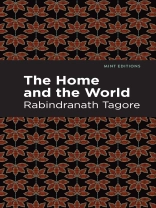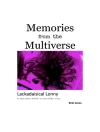The Home and the World (1916) is a novel by Bengali author Rabindranath Tagore. Written after Tagore received the 1913 Nobel Prize in Literature, the novel dramatizes the Swadeshi movement for Indian independence from British rule. Through the lens of one family, Tagore illuminates the conflict between Western culture and Indian nationalism while exploring the complex relationships of men and women in modern India.
Concerned for his wife, who spends most of her days inside, Nikhil, an educated aristocrat, brings Bimala to a political rally. There, they hear the magnanimous revolutionary Sandip speak out against British imperialism and call for Indian independence. Although Nikhil remains passive, if not indifferent, regarding British rule, Bimala, who comes from a poor family, reaches a political awakening of her own. When Nikhil and Bimala invite Sandip to stay as a guest at their home, Bimala moves further away from her traditional role as a wife and begins to develop romantic feelings for the radical figure. Aware of his growing influence, Sandip places himself between Nikhil and his wife while secretly attempting to convince Bimala to use her husband’s wealth to support the Swadeshi cause. The Home and the World is a masterful novel that explores the personal behind the political, inserting the lives of individuals into history’s great wheel without losing sight of humanity.
This edition of Rabindranath Tagore’s The Home and the World is a classic of Indian literature reimagined for modern readers.
Since our inception in 2020, Mint Editions has kept sustainability and innovation at the forefront of our mission. Each and every Mint Edition title gets a fresh, professionally typeset manuscript and a dazzling new cover, all while maintaining the integrity of the original book.
With thousands of titles in our collection, we aim to spotlight diverse public domain works to help them find modern audiences. Mint Editions celebrates a breadth of literary works, curated from both canonical and overlooked classics from writers around the globe.
Sobre o autor
Rabindranath Tagore (1861-1941) was an Indian poet, composer, philosopher, and painter from Bengal. Born to a prominent Brahmo Samaj family, Tagore was raised mostly by servants following his mother’s untimely death. His father, a leading philosopher and reformer, hosted countless artists and intellectuals at the family mansion in Calcutta, introducing his children to poets, philosophers, and musicians from a young age. Tagore avoided conventional education, instead reading voraciously and studying astronomy, science, Sanskrit, and classical Indian poetry. As a teenager, he began publishing poems and short stories in Bengali and Maithili. Following his father’s wish for him to become a barrister, Tagore read law for a brief period at University College London, where he soon turned to studying the works of Shakespeare and Thomas Browne. In 1883, Tagore returned to India to marry and manage his ancestral estates. During this time, Tagore published his Manasi (1890) poems and met the folk poet Gagan Harkara, with whom he would work to compose popular songs. In 1901, having written countless poems, plays, and short stories, Tagore founded an ashram, but his work as a spiritual leader was tragically disrupted by the deaths of his wife and two of their children, followed by his father’s death in 1905. In 1913, Tagore was awarded the Nobel Prize in Literature, making him the first lyricist and non-European to be awarded the distinction. Over the next several decades, Tagore wrote his influential novel The Home and the World (1916), toured dozens of countries, and advocated on behalf of Dalits and other oppressed peoples.












